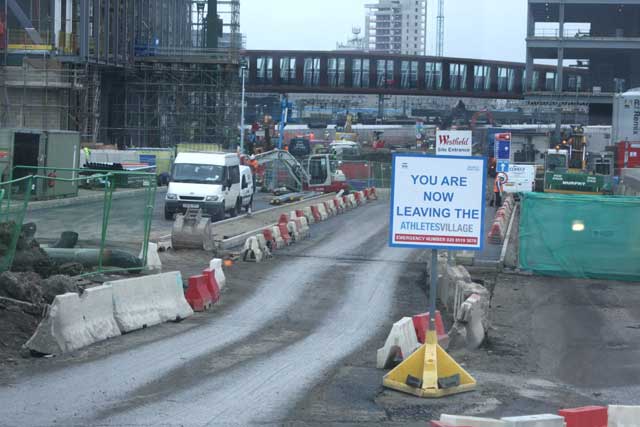Simon Calder: A post-modern pentathlon to the future
The man who pays his way

Your support helps us to tell the story
From reproductive rights to climate change to Big Tech, The Independent is on the ground when the story is developing. Whether it's investigating the financials of Elon Musk's pro-Trump PAC or producing our latest documentary, 'The A Word', which shines a light on the American women fighting for reproductive rights, we know how important it is to parse out the facts from the messaging.
At such a critical moment in US history, we need reporters on the ground. Your donation allows us to keep sending journalists to speak to both sides of the story.
The Independent is trusted by Americans across the entire political spectrum. And unlike many other quality news outlets, we choose not to lock Americans out of our reporting and analysis with paywalls. We believe quality journalism should be available to everyone, paid for by those who can afford it.
Your support makes all the difference.Rebecca Adlington was late. Not the actual Olympic swimming champion, but the high-speed train to which she has lent her name. The double gold-medallist at the Beijing Games is among the sporting celebrities for whom trains in the Javelin fleet are named; another, shrewdly on the part of the train operator, is London 2012 supremo Lord Coe.
As Rebecca crawled up from Dover, I shivered on a railway platform. The wind was whipping the sleet around the jagged angles of one of Britain's most-expensive and least-used railway stations: Stratford International. This £210m structure stands astride the "High Speed 1" line to the Channel Tunnel – whoosh, that blur was a Eurostar train. And I was nearing the end of a post-modern travel pentathlon to the Olympic venue and beyond.
This winter, two years after the station was completed, trains have finally started to stop there. Not Eurostar's, but Southeastern's. Every 15 minutes or so, one of the company's Javelins lands at the ill-named "International" station on the way from Kent to London. As a result, you can take a magical mystery tour through sporting history in the making.
The chance to take a cross-section through the future arises because of a basic flaw in Stratford International station: it is a third of a mile from the "real" Stratford station, one of the busiest transport interchanges in the capital. No one could make the journey on foot, because the two stations are separated by western Europe's biggest construction projects: the Olympic village. But because we travellers have the right to board or leave the trains at Stratford International, there has to be a bus link.
This being a very British adventure, it was never likely to be an easy journey. The first event in the pentathlon is: get to Stratford. Initially, I fell at the first hurdle: signalling problems on the Jubilee Line meant that, after three Tube trains had come and gone at London Bridge station with no sign of the crowds abating, I abandoned the quest. But three days later, I finally made it.
Event two: find the bus. "Platform 11, pal," I was told. This stretch of concrete turns out to be almost as far east from the Jubilee Line platforms as Beijing, venue for the last Olympics.
After a journey of trans-Siberian proportions, you finally reach the frozen platform. At the far end stands a prefabricated hut, a Checkpoint Charlie standing between you and the hard-hat zone of the Olympic Village – courtesy of the waiting bus.
The third event: find a fiver. Youssef Trabulsi, the cheerful chap who controls access to the bus, also sells rail tickets. Without a valid train ticket (cheapest journey, £5), you can't board the bus.
Fourth in the pentathlon was the event that is my specialist subject: looking out of the window. The view during the three-minute ride is breathtaking.
The tower blocks in this part of E15 were routinely demolished at weekends in the Seventies, in time for the teatime TV news. The area resembled the "after" picture of a nuclear apocalypse, a distillation of desolation.
Today, a futuristic phalanx of tower cranes soars from the toxic earth, their clawing and juddering choreographed by scurrying orange figures – aliens from easyPlanet? The bus link through centre stage, 2012 provides a hard-hat tour that would otherwise require months of notice and a personal invitation from Ms Adlington or Lord Coe.
When Rebecca finally turned up, she took just seven minutes to sprint to the world's greatest railway terminus, St Pancras. The fifth, final hurdle: getting past all the Southeastern staff looking out for travellers with the wrong kind of ticket.
Always on my mind: a free bus ride
A free bus trip to the sporting future comes at a price; the cheapest way to experience the 2012 site it to buy a £5 ticket from Stratford International to St Pancras. This punitive fare must be designed to deter freeloaders from shuttling back and forth all day across the venue. As a long-term abuser of courtesy buses, I am exactly the sort of person the Olympics site does not need.
Many second-division US airports (such as Memphis) have no public transport. So take the free Heartbreak Hotel courtesy bus instead. The hotel is not located "down at the end of Lonely Street" but at 3677 Elvis Presley Boulevard, whence you invest $1.50 (£1) in a ride on bus 43, marked "Elvis Presley", to downtown Memphis.
I always intend to buy at least a coffee at any hotel to which I travel free, but don't always follow through: Elvis Presley Boulevard is paved with good intentions.
Join our commenting forum
Join thought-provoking conversations, follow other Independent readers and see their replies
Comments